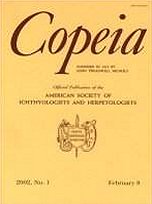The California grunion Leuresthes tenuis, a teleost fish (Atherinopsidae), spawns terrestrially by burying its eggs in damp sand on beaches following semilunar spring tides. The eggs incubate above the water line and are ready to hatch after approximately 10 days at 18 C. However, grunion eggs do not hatch, even when developmentally ready, until returned to water and mechanically stimulated by wave action. In nature, the environmental trigger occurs on subsequent semilunar tides, when waves reach as high on the shore as the eggs were buried during spawning. If waves do not reach the eggs after one semilunar tidal cycle, the eggs survive by extending incubation and delaying hatching until the trigger occurs. This may take up to several additional weeks. Temperature affects the time to hatching readiness in California grunion eggs; this interval is shorter at warmer temperatures than at cooler ones. We incubated grunion eggs at three relevant temperatures: 15, 20, and 25 C. Viability of embryos was ascertained by microscopic examination, and hatching was attempted daily for eggs from each temperature, until no eggs hatched. The ability to extend incubation and delay hatching decreased with increasing incubation temperature. At the coolest temperature, eggs survived longer but were not able to hatch at the time of the first semilunar spring tide series. Hatching success and the duration of extended incubation are also influenced by temperature. Eggs incubated at 15 C always had lower hatching success than eggs incubated at the two higher temperatures. Eggs incubated at 20 C had a significantly greater chance of surviving and hatching during the three subsequent semilunar tides than eggs at 15 or 25 C. Eggs incubated at higher temperatures matured more quickly but had a shorter total period of viability. Temperature affects the duration of extended incubation for grunion eggs, and influences their hatching success, yet a majority of the eggs can mature and hatch successfully at each of the three temperatures. A broad temperature tolerance, plasticity in incubation duration, and environmentally triggered hatching allow the grunion fish to spawn terrestrially over a long season in a variable coastal ecosystem.
How to translate text using browser tools
1 May 2002
Temperature Effects on Egg Survival and Hatching during the Extended Incubation Period of California Grunion, Leuresthes tenuis
E. A. Smyder,
K. L M. Martin
ACCESS THE FULL ARTICLE





